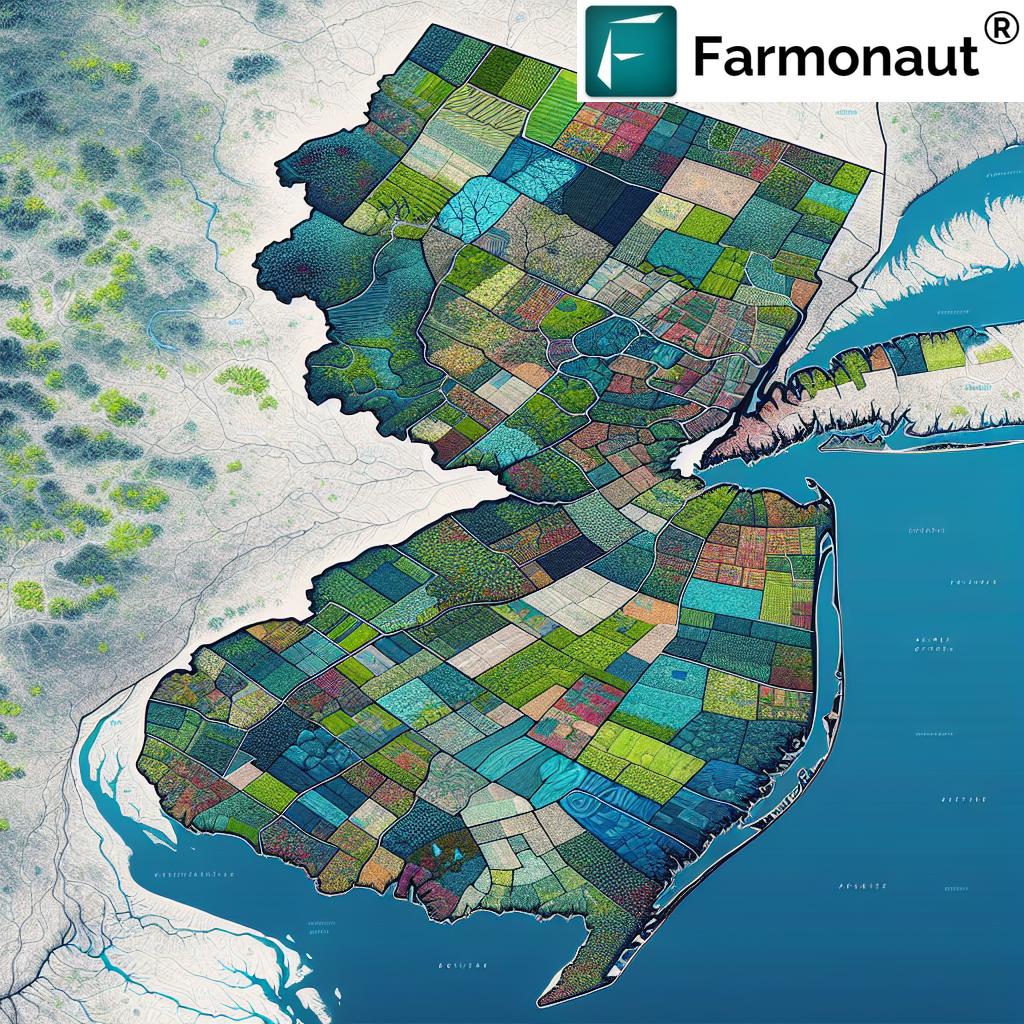2024 Corn by State, Apple, China Wheat 2025 Production: Trends, Outlook, and Global Implications
“Iowa leads 2024 U.S. corn production, contributing over 15% of the nation’s total output.”
Meta Description: Explore 2024 corn production by state, apple production, China wheat production 2025, and leading agricultural forecasts. Analyze trends, climate impacts, and technology in corn, apples, and wheat outlook for better food security and market efficiency.
SEO Title: 2024 Corn by State, Apple, China Wheat 2025 Production: Top Trends & Outlook
- Introduction: Agricultural Trends & Outlook 2024-2025
- 2024 Corn Production by State: Regional Variations and Influences
- Comparative Production Forecast Table (Corn, Apple, Wheat)
- Apple Production Trends: Regional Shifts, Consumer Preferences, and Varietal Innovation
- China Wheat Production 2025: Strategic Importance and Policy Challenges
- Technological Advancements & Infrastructure in Crop Management
- Key Challenges and Opportunities for Corn, Apples, and Wheat
- Farmonaut: Satellite-Driven Solutions for Advanced Crop Monitoring
- FAQ: 2024 Corn, Apples, and China Wheat 2025 Outlook
- Conclusion: Ensuring Resilient Agricultural Systems for 2025 and Beyond
Introduction: Agricultural Trends & Outlook 2024-2025
As global food demand continues to escalate amid climate variability and evolving market dynamics, understanding regional production forecasts for key crops like corn, apples, and wheat becomes crucial for policymakers, farmers, and agribusiness stakeholders. This comprehensive article explores the latest projections and factors influencing outlooks for 2024 corn production by state, apple production trends, and China wheat production 2025. We focus on climatic and technological shifts, regional variations, and their implications for agriculture, food security, and sustainability.
2024 Corn Production by State: Regional Variations and Influences
Corn Remains the Backbone of the U.S. Agricultural Economy
The United States consistently leads global corn production, supplying food, feed, and biofuel industries worldwide. The 2024 corn production by state forecast spotlights not only the Midwest Corn Belt (Iowa, Illinois, Nebraska, Indiana)—which continues to dominate—but also highlights increasingly important shifts due to climatic variability, technological upgrades, and new market drivers.
- Iowa remains the top producer in 2024, accounting for over 15% of total U.S. corn output. Favorable spring planting conditions, widespread adoption of drought-tolerant hybrids, and advanced soil management practices have reinforced its leading status.
- Illinois and Nebraska follow closely. These states benefit from highly fertile soils, substantial irrigation infrastructure, and investments in technological innovation, which boost resilience and offset some impacts from late summer dry spells.
- Kansas and Texas are projected to see modest declines in overall production, with enduring drought and limited irrigation capacity underscoring regional vulnerability.
- The Northern Plains states—including North Dakota and Minnesota—reflect a trend of expanding corn acreage, improved soil moisture, and longer growing seasons facilitated by climate shifts.
The trend toward increased precision agriculture adoption, real-time monitoring, and seed genetics improvements continues to define the sector, stabilizing yields and improving overall agricultural resilience. Efficient infrastructure for grain storage and transportation further enhances output and market efficiency.
Key Factors Influencing Corn Output in 2024
- Climate patterns: Warming trends and late summer dry spells have necessitated better drought management and promote hybrid adoption.
- Technological advances: AI, satellite technology, and sensor-based systems drive efficient crop monitoring and management.
- Economic conditions: Acreage adjustments stem from evolving market demand, input costs, and crop insurance policies.
- Regional infrastructure: Efficient storage, transportation, and export systems are pivotal for timely market access.
By integrating advanced large-scale farm management tools and fleet management solutions, stakeholders can further enhance operational efficiency and maximize the value of every harvested acre in states like Iowa, Nebraska, and Illinois.
Comparative Production Forecast Table
(Corn by State, Apple Trends, China Wheat Production 2025)
| Region/Country/State | Crop/Product | Year | Estimated Production (Metric Tons) | YoY % Change | Major Influencing Factors | Notes |
|---|---|---|---|---|---|---|
| Iowa (U.S.) | Corn | 2024 | 60,500,000 | +2.1% | Favorable spring, advanced hybrids, resilient practices | Top U.S. corn producer in 2024 |
| Nebraska (U.S.) | Corn | 2024 | 39,000,000 | +1.5% | Efficient irrigation, favorable soil moisture | Strong irrigation capacity |
| Kansas (U.S.) | Corn | 2024 | 19,500,000 | -2.3% | Enduring drought, limited irrigation | Production shift northward |
| Washington (U.S.) | Apple | 2024 | 3,150,000 | +1.8% | Extensive irrigation, varietal shift (Cosmic Crisp), climate adaptation | Largest U.S. apple state, focus on premium/heat-tolerant types |
| New York (U.S.) | Apple | 2024 | 1,400,000 | 0.0% | Integrated pest management, organic expansion | Stable, premium & organic market growth |
| China | Wheat | 2025 | 137,200,000 | +1.7% | Climate adaptation, yield-boosting varieties, government policy | National food security priority |
| Global (Top 5 Producers) | Apple | 2024 | ~86,000,000 | +1.2% | Consumer trends, climate variability, pest pressures | Shifting varietal and regional output |
“China’s wheat production is forecasted to exceed 137 million metric tons in 2025, a record high.”
Apple Production Trends: Regional Shifts, Consumer Preferences, and Varietal Innovation
Globally and in the United States, apple production is directly shaped by evolving consumer preferences, climatic fluctuations, and innovations in orchard management throughout 2024 and beyond.
Key apple producing regions, especially Washington State, New York, and Michigan, continue to respond dynamically to market and climate influences to maintain stable productivity and quality.
Washington: Dominance & Climate Adaptation
- Washington State—the leading U.S. apple producing state—leverages its favorable Pacific Northwest climate and year-round irrigation infrastructure.
- Expansion into premium, heat-tolerant, and trending varieties (Cosmic Crisp, Honeycrisp, Gala) responds to growing consumer demand and adapts to increasingly warm, erratic summers.
- Innovations such as precision nutrient management and advanced orchard pest mitigation systems sustain productivity during late spring frost or pest pressure events.
New York & the Northeast: Quality, Organics, and Integrated Management
- New York apple output remains stable in 2024, buoyed by targeted integrated pest management and a significant increase in organic apple production.
- Shifts in consumer preferences have led to greater varietal diversity, including organic and “club” varieties, reflecting a growing premium market segment.
Across global orchards, growers are heavily investing in temperature mitigation technologies (sprinkler systems, wind machines) and micro-climate monitoring systems to address climate risk. These adaptive strategies are essential to meet both domestic and export market expectations.
Future Outlook: Global Apple Production and Sustainability
- Apple-growing regions worldwide are increasingly vulnerable to weather variability and disease pressure, influencing output and varietal choices.
- Leading apple exporters face challenges around labor costs, evolving environmental standards, and the ongoing need for sustainable orchard management.
Emerging technologies, such as satellite-driven monitoring platforms and blockchain-based traceability (see Farmonaut product traceability solutions), are increasingly vital for export compliance and transparency, helping maintain consumer trust in high-demand markets.
China Wheat Production 2025: Strategic Importance and Policy Challenges
China wheat production 2025 is projected to set new records, continuing its key role in the nation’s food security strategy. The focus remains on self-sufficiency, amid unpredictable global market conditions and climate variability challenges.
- Northern provinces: Henan, Shandong, and Hebei remain central, with advanced yield-improvement strategies and sustainable water management.
- Government policies prioritize the adoption of high-yielding, disease-resistant wheat varieties and rigorous input management.
Key Policy Directions & Strategic Initiatives
- Conservation Tillage: Expansion of no-till and minimum-till systems preserves soil health and reduces environmental impact.
- Technology and Mechanization: Digital agriculture and mechanized sowing/harvesting enhance efficiency in large wheat-growing zones.
- Pest and Disease Management: Early warning systems and integrated pest management are pivotal amid fluctuating climate risks.
Climate Risks & Resilience Building
- Shifting rainfall and temperature extremes in North China have compressed sowing windows and extended risks for crop development.
- Research programs emphasize climate-resilient wheat breeding—with early maturation and drought tolerance—alongside substrate and precision fertility management.
Policy shifts are also key, as the government intensifies investments in advanced carbon footprinting and environmental impact tracking—helping support sustainability and regulatory compliance.
Technological Advancements & Infrastructure in Crop Management
- Satellite Technology: Satellite-based real-time monitoring systems (like those offered by Farmonaut) are reshaping crop health analysis, soil moisture measurement, and weather pattern tracking across crops such as corn, apples, and wheat.
- Precision Monitoring: Sensor-enabled soil and crop management provides granular insight, allowing for smarter use of irrigation and fertilizers.
- Blockchain Traceability: Food supply chain trust is enhanced through blockchain solutions that certify origin, sustainability, and quality—critical for high-value markets.
- Fleet and Resource Management: Modern crop logistics and handling systems boost farm-to-market efficiency, reducing wastage and optimizing resource flow—especially pivotal in corn-dominant regions.
Our API solutions (Farmonaut API | Developer Docs) make it effortless to embed satellite weather and production analytics directly into agri-management systems for both private enterprises and government stakeholders. These innovations collectively future-proof food supply chains and promote adaptability amid global uncertainty.
Key Challenges and Opportunities for Corn, Apples, and Wheat
Navigating 2024-2025 agricultural production across corn, apples, and wheat requires a holistic view of risks and opportunities—including climate variability, resource constraints, and rapidly evolving market expectations.
Major Risks in Crop Production
- Climate Variability: Erratic weather (droughts, floods, temperature swings) continues to challenge yield stability for corn (Kansas, Texas), apples (global frost/pest risk), and wheat (northern China).
- Pest and Disease Outbreaks: Pervasive threats demand consistent adoption of integrated and technology-driven management strategies, including those based on remote sensing and AI.
- Input Availability and Cost: Fertilizer, water, and labor costs remain volatile, impacting profit margins and regional output.
- Infrastructure Gaps: Regions with limited irrigation or outdated storage/transport systems (e.g., portions of Texas and rural China) see greater post-harvest losses.
Opportunities and Future Prospects
- Sustainability and Carbon Management: Adoption of practices such as conservation tillage, cover crops, and proactive carbon measurement (see Farmonaut’s carbon footprinting tools) creates novel value streams and increases regulatory compliance.
- AI & Satellite-Based Innovation: Deployment of AI-driven advisory systems, like Farmonaut’s Jeevn AI, enhance productivity and reduce weather/pest-driven risks for corn and wheat growers.
- Traceability for Export Markets: Blockchain-based monitoring ensures supply chain authenticity—vital for exporters and premium market access, especially in apples and specialty wheat products.
- Accessible Loan and Insurance: Satellite-based verification now helps farmers (in the U.S., China, and beyond) secure credit and insurance efficiently. Learn more about this with Farmonaut’s crop loan and insurance solutions.
Farmonaut: Satellite-Driven Solutions for Advanced Crop Monitoring
Innovative technology is central to addressing 2024 corn production by state, apple production, china wheat production 2025 challenges. At Farmonaut, our mission is to democratize satellite-based insights for anyone in agriculture, mining, or infrastructure—all at an affordable scale.
Our Key Agricultural Offerings
- Satellite Imagery & Crop Health Monitoring: We harness multispectral images for real-time crop growth evaluation, detect stress signals, and assess soil and vegetation health (NDVI).
- Jeevn AI Advisory System: Our AI-based platform delivers tailored recommendations on irrigation, fertilizer timing, and pest management for optimized yields—direct from satellite and sensor data.
- Blockchain-Based Traceability: Secure end-to-end product verification drives integrity in apple, wheat, and corn supply chains (see Farmonaut Product Traceability).
- Environmental Impact & Carbon Tracking: Our tools make compliance with sustainability regulations straightforward (carbon footprinting info).
- Fleet, Resource, and Large-Scale Management: Farmonaut fleet management plus large-scale farm management apps improve logistical efficiency from field operations to storage and export points.
All solutions are available via Android, iOS, web, or API, and are trusted by farmers, agribusiness, and governments for streamlined crop monitoring, risk management, and strategic planning.
Are you ready to take control of crop monitoring, carbon tracking, and advanced agronomy risk management? Get started for free—download the Android App, iOS App, or access via web app.
Farmonaut Subscription Packages – Easy, Scalable, Affordable
FAQ: 2024 Corn, Apples, and China Wheat 2025 Outlook
- Q: Which U.S. state leads 2024 corn production?
A: Iowa is the leading corn-producing state in 2024, supplying over 15% of total U.S. corn output due to favorable climate, advanced hybrids, and superior management. - Q: What are the main trends in 2024 apple production?
A: U.S. and global apple production is increasingly influenced by climate adaptation (heat-tolerant varieties, irrigation), consumer preferences for premium and organic apples, and advances in pest/integrated management systems. - Q: How is China’s wheat production expected to perform in 2025?
A: China’s wheat output is forecast above 137 million metric tons in 2025, fueled by strategic policy support, the adoption of climate-resilient varieties, and mechanized, data-driven management. - Q: How do climate and technology innovations interact with crop production prospects?
A: Climate variability introduces risk, but precision technology—satellite monitoring, AI advisories, traceability—enhances resilience and provides early warning to optimize yield and resource use. - Q: How can digital tools and data help farmers and agribusinesses?
A: Satellite platforms like Farmonaut deliver actionable insights (crop health, weather, carbon, traceability) to boost productivity, improve sustainability, and respond proactively to agronomic, market, or climate risks.
Conclusion: Ensuring Resilient Agricultural Systems for 2025 and Beyond
The landscape for corn, apples, and wheat production—spanning the leading U.S. states and global/agricultural players like China—remains in flux amid climate, technology, and market shifts. 2024 corn production by state, apple production, china wheat production 2025, and related forecasts highlight the crucial interplay of resilience, management, and timely innovation needed to ensure global food security and economic stability.
- Regional variations in corn and apple output highlight where adaptation and investment have yielded high returns on yield and efficiency.
- China’s wheat production reflects how policy and cutting-edge technology can elevate national food supply resilience.
- Farmonaut’s satellite-driven platform equips stakeholders at every level—from farmers to governments—to address the challenges and seize the opportunities of the next decade in agriculture through cost-effective, scalable, and sustainable monitoring and management solutions.
For all stakeholders—including farmers, policymakers, and agribusiness—the path forward is one of continued adaptation, research, and strategic investment in both innovation and sustainable practices. By building robust, regionally attuned frameworks and leveraging key technologies, agriculture will continue to thrive even as the world’s food demand escalates.
Related Reading & Tools
- Farmonaut Satellite Weather API – Seamlessly connect real-time agricultural data to your decision-making systems.
- Farmonaut Product Traceability – Ensure supply chain transparency for crops like corn, apples, and wheat.
- Crop Loan & Insurance Solution – Support farm finance and risk management efficiently.
- Admin App for Large-Scale Farm Management – Optimize and monitor operations at scale.
Stay informed—bookmark this page for ongoing updates, and leverage advanced tools to make your agribusiness future-ready for 2024, 2025, and beyond.












